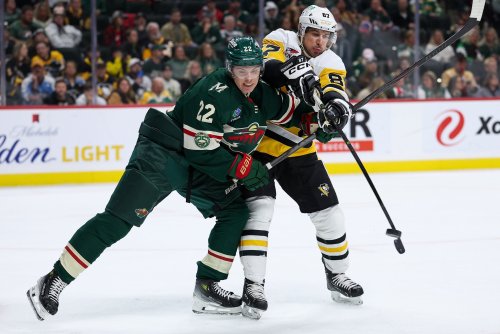
In Nashville, musicians and songwriters have a saying: “No money is made above the fifth fret.” Now, that doesn’t mean that Eddie Van Halen's might-as-well-be-an-opus-at-this-point guitar master class, Eruption, isn't amazing, even though most of what he did was way above the fifth fret.
The true understanding of this statement, forgetting about the obvious existential virtue, is that if you want to make it as a musician (which is arguably tougher than a pro hockey player), you've got to keep it simple. Find your most basic, honest identity – the meat and potatoes, if you will – of what you do. Then get really good at those few things. And that, my friends, is where the money is made.
The same can be said in hockey. A team's success depends on how quickly it can define and assume its team habits – the meat and potatoes of what you do well as a team. Teams will adopt these from the beginning of a season and attempt to manifest these “core principles” as the season advances.
Hopefully, these will run the length of the season, which in turn will become the team's identity over time. It could be, for example: skating, turnovers, conditioning, strong forecheck, shots from everywhere, Rush D, Rush O, speed, transition, D men joining, etc. There are many habits a team can consider adopting.
The trickier part is taking into account your personnel on hand and the player/position skill sets that you have. Adapting to your players is imperative, not the other way around. You can’t make players who don’t defend well suddenly become elite defenders. Eventually, those habits will define your team (good or bad), and it’s impossible to sell your soul at the Crossroads to be great at all of your habits. This isn’t the Islanders of Stanley Cup yore, a team that did all of the habits really well.
In my experience, with all credit to St. Olaf Head Coach Eddie Effinger, we have a phrase: Middle is Life. Meaning the basis for success in our game is largely dependent on the game within the game: the game happening in the middle of the rink. Part of what that means to me is that to be successful, you must win the areas in front of both nets every night. If you get good at doing those two things, you will not get scored on as much as the other team and score more goals than the other team.
Win the middle, and you will win more games.
Where are snipers most dangerous? The middle of the ice – not on the flanks. Minnesota Wild fans have seen it. Give Kirill Kaprizov the middle, and he will get a high-quality scoring chance on most of those opportunities. Even Alexander Ovechkin, with his amazing one-timers, is scored at or inside the dots. Those are hard to stop, even for NHL goalies.
The effectiveness of a team offensively and defensively is played in the middle of the ice, not on the flanks or behind the net. Might seem like a simple concept, but the application and execution of that is the difference between teams that win and teams that don’t. Meat and potatoes.
Practically speaking, winning the middle starts with the players who occupy the middle of the ice: goalies, defensemen, and centers. Concerning the Wild, their lack of defensive and center depth isn’t an open secret, but the middle of the ice needs to be a top priority for the Wild. Eight out of Minnesota’s top 10 prospects in 2024 are either a goalie, defenseman, or center. Through it all, the Wild somehow have goalie depth, and they should get kudos for that. However, defense and center depth have been and still are major issues for this club.
The Wild need to shore up the middle of their lineup to be a consistent playoff team. They are flush with decent wingers, but Joel Eriksson Ek, Marco Rossi, and Jake Luchini? Those are the only centers they’ve rostered. The Wild need to get tougher up the middle in addition to more secondary scoring from their centers. Perhaps Rasmus Kumpulainen and Marat Khustindov will be the upgrades they need.
They are actively building defensive depth with young players on the back end with Brock Faber, Declan Chisholm, and Carson Lambos, and by signing Jack Peart recently. Those are good signs that the Wild understands that, as we say, middle is life, and you need to prioritize those areas of the ice to be a consistent winner. It seems like a clawback is happening. And that is a good thing.
Hockey, like music, is finding your identity and doing that really well. The money will follow.
That’s life below the fifth fret.
Think you could write a story like this? Hockey Wilderness wants you to develop your voice, find an audience, and we'll pay you to do it. Just fill out this form.
-
 2
2







Recommended Comments
Join the conversation
You can post now and register later. If you have an account, sign in now to post with your account.
Note: Your post will require moderator approval before it will be visible.